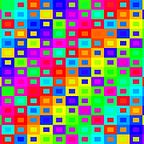Baskets and Architecture
Human Ritual and Procedural Design
Baskets highlight the role of human ritual. A work of architecture grows from an underlay of codes, systems, and processes, building up its own concepts and logics.
1
In the baskets of the Tohono O’odham tribe, ritualistic making is embodied by the coil. The act of coiling begins with a central point around which a material is wound, spiraling outward and upward in concentric circles to create a structural surface. Coiling generates form through pattern — an algorithm — building on a set of principles that can be manipulated to generate shape. Surface extends to create a plate, a bowl, a vase, or a more elaborate form. Coiling is a structural strategy for producing functional objects, but it is also a ritual for connecting the weaver to his or her community, elders, and surrounding desert environment. Ritual material culture and everyday utilitarian material culture are inseparable. Through the making of everyday objects, people reiterate the foundational values of their society. The gathering, preparation, and manipulation of natural materials into a basket guides the weaver toward understanding the world around them and their place within it. As with the O’odham peoples, cosmology is expressed through the very language of basketry. Coiling coalesces the material, spiritual, aesthetic worlds. Take I’itoi or the Man in the Maze: the creator who first brought people to earth from the underworld. The story of I’itoi tells the story of every human’s uncertain journey through the labyrinth of life — a labyrinth traced by coiling and believed to be the floor plan of I’itoi’s house atop Baboquivari Mountain.
In a craft like weaving, ritual and material action are always intertwined. From the foraging and preparation of a material to its transformation by hand, the weaver reiterates the foundational meanings of society. Its place in the natural world — its traditions, myths, and memories — exists in an extended process of materialization.
Architecture as a material practice is similarly intertwined. Embedded with larger collective structures — structures that are rebuilt and revitalized over and over again. In architecture and in weaving, there exists a disengagement from the object being formed. In both practices, the process is more about the relations around that object than the object itself.
Basket making is as much a procedural process, warp and weft, as it is a social process. It brings people together, not only those that gather to weave but also the ancestors whose tradition they continue. Native American weavers, like the Tohono O’odham tribe, speak
of an object’s many voices — as if each basket is in essence a conversation.
“Many times I dream a design and it haunts me until I actually weave it.” — Terrol Dew Johnson
Architecture, too, converses — between themes of universal significance, geometry and matter, and the actual experience and material through which these become manifest. It is a boundless and inspiring conversation. It reminds us that design mediates two worlds: one entirely abstract and coded, and the other very real and alive — like what we find through our interactions every day with people, communities, and cities.
In the end, the truly inspired moment comes with the realization that neither of these worlds is of our own making; both were always here and somehow discovered along the way.
Note:
This article is an excerpt from our book Trace Elements by Columbia Books on Architecture and the City.
